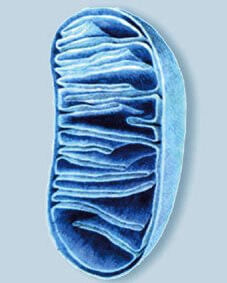In Part 1 of my serie of blog posts on carbohydrates (CHO) and endurance athletes, we had an overview on the importance of post-workout carbohydrate feeding in the recovery process. It's main role is to refuel muscle glycogen stores in order to set you up for your next training session. This is one part of the recovery equation and CHO plays another major role in the recovery phase by starting its action during the training session.
Ingesting carbohydrates during training has been shown to possibly blunt the glucoregulatory hormonal response (insulin, glucagon, epinephrine, growth hormone and cortisol) during exercise. These hormones (except insulin) are responsible for the increase in blood glucose concentration. Their activity generally increases with exercise intensity or duration in order to level off blood glucose concentration since exercise intensity/duration depends on glucose as fuel. How does CHO feeding during exercise act on your body? What mecanism comes into play? Here is a brief summary of what happens.
Implications in recovery and peripheal fatigue
CHO feeding during exercise could lower blood concentration of the hormone cortisol. Altering cortisol secretions can have some positive effects on recovery. Cortisol is known to suppress the immune system by decreasing T-cells and therefore makes you more prone to catching infections and illness. To regulate blood glucose, cortisol uses the body's amino acids and transforms them into glucose and liver glycogen (neoglucogenesis). This means it can feed your body using it's own tissus such as muscle fibers and connective tissus. Decreasing neoglucogenesis by ingesting CHO during exercise could therefore accelerate the recovery process. During exercise, cortisol blocks glucose entry into the cells which could decrease exercise intensity by promoting free fatty acids (FFA) use as fuel. Less plasma glucose available for working muscles potentially leads to accelerated fatigue of those tissus and can compromise subsequent medium to long term recovery. Decreasing growth hormone effect has similar results since GH supports cortisol action.
Plasma concentration of hormone epinephrine is a strong marker of glycogenolysis. The more epinephrine concentration is found in blood, the more muscle glycogen will be used during exercise to maintain intensity level and liver glycogen to maintain blood glucose levels. Using liver glycogen to maintain blood glucose levels at a stable concentration means less glycogen is used for exercise specific oxidation. CHO feeding during exercise as been shown to reduce epinephrine production and could therefore spare muscle and liver glycogen use. Even though it might be a marginal change, sparing muscle glycogen knowing you only have about 400g available is always something good. The role of endogenous CHO feeding in that case comes down to regulate blood glucose concentrations in order to prevent using liver glycogen stores to do that task. More glycogen is then available for specific muscle contraction during exercise and could delay exercise specific muscle fatigue.
Insulin levels during exercise generally follows a downward tendancy with exercise intensity/duration. Ingesting CHO during exercise could help maintain insulin secretions at resting levels and could even slightly increase it's production. The main action of insulin is to uptake blood glucose and store it as muscle and liver glycogen. Having normal or slightly elevated insulin levels could then accelerate the recovery process by increasing the rate of blood glucose uptake to cells. It could contribute to muscle and liver glycogen synthesis during exercise as well, delaying peripheal fatigue.
To summarize, endogenous CHO ingestion during exercise helps maintain blood glucose levels stable and blunts glucoregulatory hormones response. Lowering the effect of these hormones could have implications in exercise intensity, fatigue during exercise and post-workout recovery mainly by sparing muscle glycogen stores.
Some theories involving CHO feeding during exercise and glucoregulatory hormonal response are linked to the onset of central fatigue. Decreasing the glucoregulatory hormones effect by CHO feeding leads to more stable blood glucose levels and thus, less free fatty acids blood concentration and oxidation during exercise. FFA blood concentration is thought to promote fatigue during exercise, which brings us to Part 3 in a few days.

.JPG)



